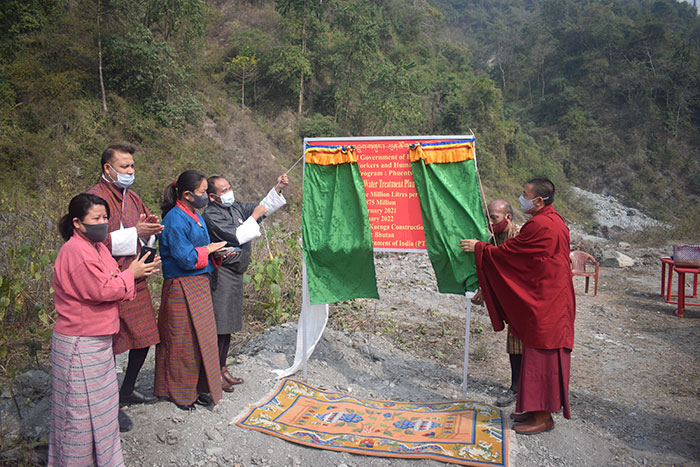Rajesh Rai | Phuentsholing
Water shortage problems for the residents of Phuentsholing thromde could become a thing of the past in the near future, with the start of a major water flagship programme.
There are three different projects under this programme and the construction of the Omchu water treatment plant at Khareyphu, the first of the three projects, began yesterday.
The plant will supply 1 million litres per day (MLD). Under the project-tied assistance (PTA), the government of India (GoI) has approved a funding of Nu 50 million (M) for the Omchu treatment plant. The budget for the three projects under the assistance is Nu 270M.
Phuentsholing thrompon Uttar Kumar Rai said the Omchu treatment plant will cater to areas in Kabreytar that need continuous water supply and provide a new connection to Khareyphu.
“The reservoir will then connect to the existing tank and cater to the core town area,” he said, adding that the connection will also be taken to Rinchending and Allay in Pasakha.
When the three projects are completed, Phuentsholing thromde will be adding a total of 13MLD per day covering all the 11 local area plans (LAP). This is in addition to the existing more than 6MLD thromde has today.
The other two water treatment plants will be constructed at Barsachu in Pasakha and Toorsa Tar area.
The Barsachu plant will have the capacity to provide 4MLD per day and be constructed at a cost of Nu 50M. All the preparatory work for this plant has been completed and a tender has been floated.
Toorsa treatment plant will have 8MLD and be constructed at Nu 170M. Officials are preparing to tender out this project.
Uttar Kumar Rai said that, although the standard requirement is to provide 150 litres of water for a person, thromde has kept the benchmark of 200 litres per person.
“And the flagship programme is for many years,” he said.
He said the thromde kept a population projection to cater to 85,000 people.
Uttar Kumar Rai said that, although Phuentsholing thromde doesn’t have huge water shortage issues today, whatever problems kept on arising were because of development activities in the town.
“In two to three years, when the water flagship programme is completed, there will be no drinking water shortage,” he said.


